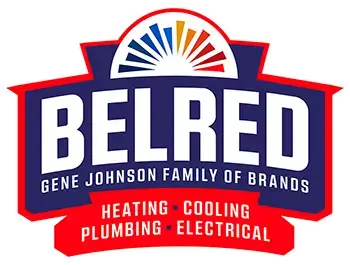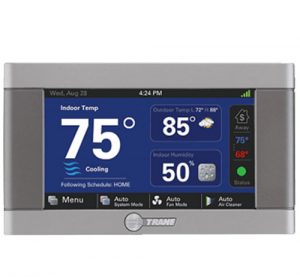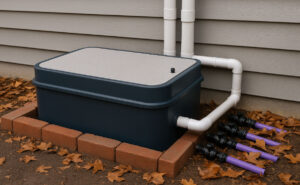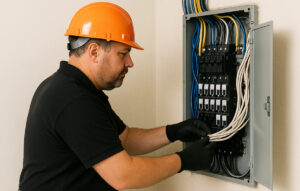As winter approaches and the cold starts to creep in, homeowners using heat pumps might start wondering, “Will my pump be able to adequately heat my home even if outside conditions become frigid and bitter? How long can my pump keep up with the continuously dropping temperatures?”
Even with advanced technology and system upgrades, heat pumps may reach a point where adequate heating of a home becomes a challenge. Just like any other technology, they can reach a tipping point. So, knowing the key factors that impact your heat pump’s performance is very important.
In this article, we’ll briefly discuss how heat pumps work, explain the temperature limits for heat pump operation, and equip you with professional-grade strategies to optimize your pump’s output even during harsh winter conditions.
We want you to have a cozy living space all year round! We also want you to have peace of mind and freedom from anxiety when extreme conditions start to set in because you know when and how to adapt your heating system.
How Heat Pumps Work
Most HVAC systems combust fuels or use electricity to generate heat. However, heat pumps are unique. They do not generate their own heat. Instead, they capture existing thermal energy from one place and transfer it to another place.
Air always contains some level of thermal energy even when the temperatures dip below the freezing point. The job of a heat pump is to absorb this low-level heat through refrigerant lines and a compressor unit which is usually located outside your home. The compressor concentrates the heat from the refrigerant lines until it becomes a higher, more usable temperature.
The now heating-ready refrigerant travels indoors where it circulates through a sealed indoor air handler unit containing an air blower. As it flows across the coil, the blower forces air from your home to pass over the hot coil, causing it to absorb the heat from the coil. The air then becomes warm and is distributed back into your home.
After heating the indoor air, the now cooled refrigerant travels back outside and captures thermal heat again. The heat transfer process then repeats. Thankfully, no matter how frosty it gets, there’s always some amount of heat for the pump to absorb, concentrate, and circulate indoors.
Some of the more advanced heat pump models can act as air conditioning units during the summer months by reversing this heat transfer process. This time, the heat from indoors is absorbed and pushed outside, and only the cooled air is pushed back into the home.
Because of its unique way of transferring heat, heat pumps provide heating and cooling while consuming far less energy than traditional HVAC systems.
Factors Affecting Heat Pump Performance
No heating system is impervious to the elements. Even with their energy-efficient design, there are certain variables that can hamper a heat pump’s performance. Being aware of these potential limitations allows homeowners to have proper expectations and take practical steps to address these issues.
Temperature Extremes
Heat pumps excel at capturing and transferring thermal energy between indoors and outdoors. However, the greater the temperature divide between these two environments, the harder the system must work.
When bitter cold arrives and outdoor air plummets well below freezing, it becomes an uphill battle for the heat pump to extract and concentrate enough usable heat to maintain set indoor temperatures. This is why you may notice a decline in heating output and efficiency as the mercury takes a nosedive.
Efficiency Metrics
Most manufacturers provide efficiency ratings to estimate a heat pump’s performance under controlled conditions. Numbers like the Coefficient of Performance (COP) quantify the heating cycle efficiency, while the Heating Seasonal Performance Factor (HSPF) measures anticipated efficiency across an entire season.
The higher these numbers, the less energy the unit will consume to produce each unit of heating output. However, published ratings are typically under ideal conditions. Extreme cold can cause efficiencies to drop below spec.
Insulation and Weatherization
A well-insulated and tightly sealed home assists the heat pump by reducing heating loads. Adequate insulation in walls, attics and crawl spaces prevents conditioned air from easily escaping. Proper weatherstripping and caulking minimizes air leakage. This allows the heat pump to maintain temperatures more efficiently against harsh outdoor conditions.
Proper System Sizing and Installation
For maximum performance, a heat pump must be properly sized for the home’s specific heating load and climate conditions.
Units that are too small will struggle, run continuously, and cannot keep up once temperatures turn frigid. Conversely, an oversized unit will cycle rapidly and fail to reach efficient operating levels.
Professional sizing calculations and expert installation are critical.
Temperature Limits for Heat Pump Operation
As we’ve discussed, extreme temperatures can affect a heat pump’s performance. Even the most advanced heating systems cannot fully defy the challenges posed by extreme winter conditions.
But at what temperatures do heat pumps start to become overwhelmed? This is an important question because knowing the balance point and temperature thresholds will help you plan and prepare supplemental heating solutions.
The Balance Point
On very frigid winter days, there may come a point where the outdoor air is too cold for the heat pump to absorb enough thermal energy to heat the home.
The temperature below which your pump starts to become inadequate is often referred to as the balance point or cold weather cutoff.
While specific cutoff temps can vary depending on your model and installation, most air-source units hit their limit somewhere in the 25-35°F range. Below this temperature, the heat pump’s output diminishes rapidly, leaving indoor spaces uncomfortably chilled.
Knowing this cutoff point is important so that you can provide auxiliary heating sources to supplement the warmth that your heat pump can no longer provide on its own.
Other Operating Thresholds
While the cold weather cutoff is specific to air-source heat pumps, other system types have general temperature limitation guidelines to keep in mind:
Ground-Source (Geothermal) Models: These models usually perform better than air-source units at lower temperatures because they tap into the earth’s more stable ground temperatures. However, below 15-25°F they also start to struggle and need the aid of other heating sources.
It’s important to note that these are simply estimates. As discussed before, there are a lot of factors that affect how well your heat pump operates.
Climate Impacts
In addition to output declines, extreme cold degrades a heat pump’s overall energy efficiency – even if outdoor conditions remain above the system’s minimum operating temp. The larger the temperature split between indoors and out, the harder the system must work, resulting in higher energy usage.
For example, an air-source heat pump rated for operation down to 10°F may technically meet that spec in northern regions like Minneapolis. However, its efficiency at those near-redline low temps will likely suffer compared to the same unit’s performance in milder southern climates with smaller temperature extremes.
Understanding your local winter weather patterns becomes critical for anticipating when auxiliary heating options may need to take over more duties to prevent excessive efficiency losses while maintaining comfort.
Tips to Optimize Heat Pump Performance
While heat pumps inevitably face hurdles when cold temperatures really bear down, there are practical steps you can take to help these systems operate at their best, even in the depths of winter. A few simple strategies go a long way in maximizing heating output and efficiency when the mercury plunges.
Seal Up Those Air Leaks
Making sure your home’s “envelope” is nice and tight is rule number one for getting the most from your heat pump. That means comprehensively insulating attics, walls, and crawl spaces while obsessively caulking and sealing any drafty windows, doors, or construction joints.
The more you can prevent heated air from continuously escaping and cold air from infiltrating, the easier it becomes for your heat pump to maintain comfortable temperatures without being overtaxed. Those free-flowing air leaks make the system work harder than it should. Plugging them means your equipment can operate at peak efficiency.
Dial In Those Thermostat Settings
When winter storms unleash their full fury, it’s wise to adjust your thermostat settings to ease heating demands on the heat pump. Temporarily dialing back temperatures a few degrees allows any integrated auxiliary heating systems like furnaces to shoulder more of the load.
Preventing the heat pump from running excessively not only preserves its output when you need it most – it also optimizes energy efficiency during those peak cold snaps. Smart thermostat technologies can automatically initiate these optimum heating transitions too.
Tune It Up Annually
Like any heating system, heat pumps need routine professional maintenance to operate at peak performance all winter long. Having your equipment thoroughly inspected and serviced annually by trained HVAC techs ensures it’s ready for action when temperatures plummet.
During these tune-ups, all mechanical components are comprehensively tested while coils, refrigerant levels, and controls are optimized. Catching small issues early prevents larger breakdowns once the heating load intensifies. A well-maintained system is simply a more efficient and reliable one.
Consider Upgrading Your Supplemental Heat Source
For regions that really experience brutally harsh winters, integrating a high-efficiency supplemental heating solution provides year-round comfort while preserving heat pump output and efficiency.
These upgrades could include cutting-edge dual-fuel hybrid systems combining your heat pump with a gas furnace, or even advanced wood or pellet stove installations for whole-home supplemental heat. Having that backup heating power optimized for extreme conditions means your heat pump isn’t pushed past its limits.
Keep Cozy All Year with Heat Pump Optimization Strategies
Heat pumps are unique and energy-efficient HVAC systems that are intended to keep you warm and toasty during the cold winter months. However, they have some inherent limitations, especially when temperatures drop really low.
Knowing your heat pump’s balance point and temperature threshold will allow you to make use of proven strategies that will optimize your pump’s performance.
There are a lot of practical measures you can take such as ensuring your home is well-insulated, knowing what thermostat temperatures to dial in, making use of consistent system maintenance, and even upgrading your supplemental heating solution.
Although there is a lot you can do on your own, don’t hesitate to reach out for professional expertise.
At BelRed Energy Solutions, our team of certified experts has over 35 years of experience helping Pacific Northwest homeowners master year-round heating performance. We’ll partner closely with you to come up with an optimized heat pump system that will fit your home’s unique needs and local climate conditions.
Don’t allow frigid conditions to rob you of a cozy home! Call BelRed today at (855) 345-6161 to achieve consistent, efficiently heated comfort through winter’s harshest conditions.







